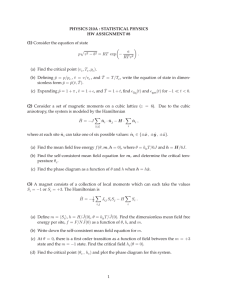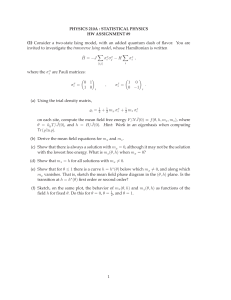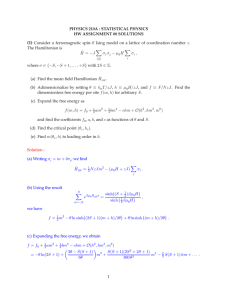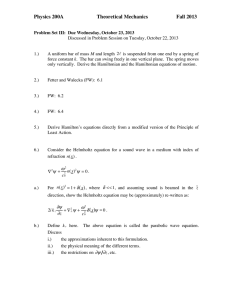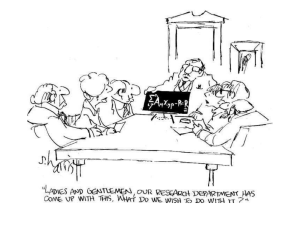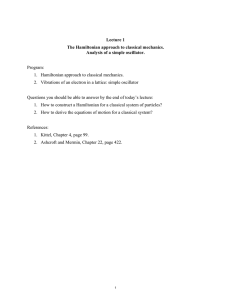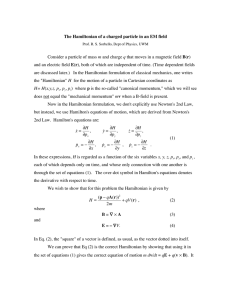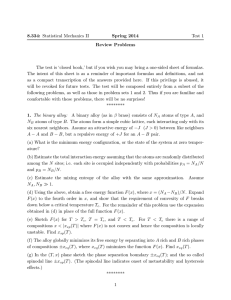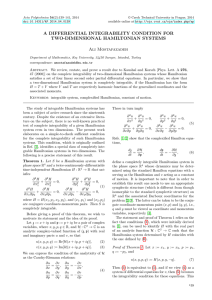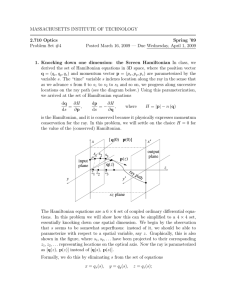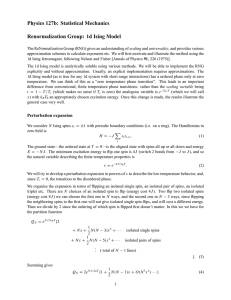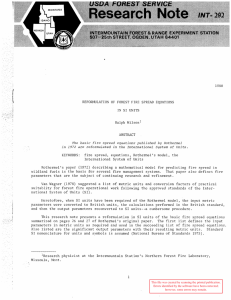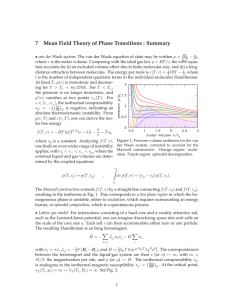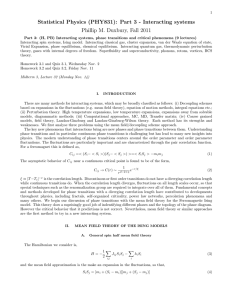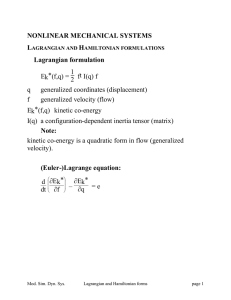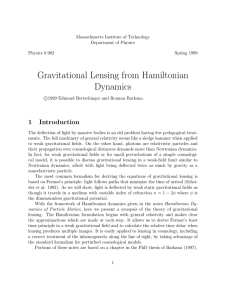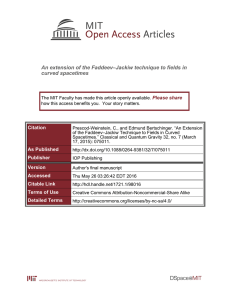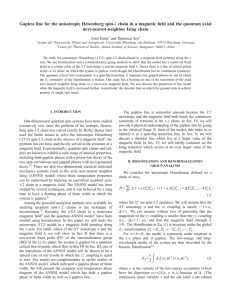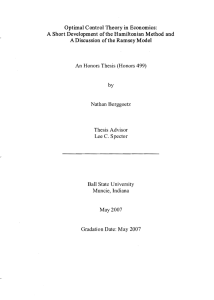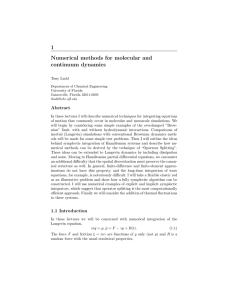(1)
advertisement
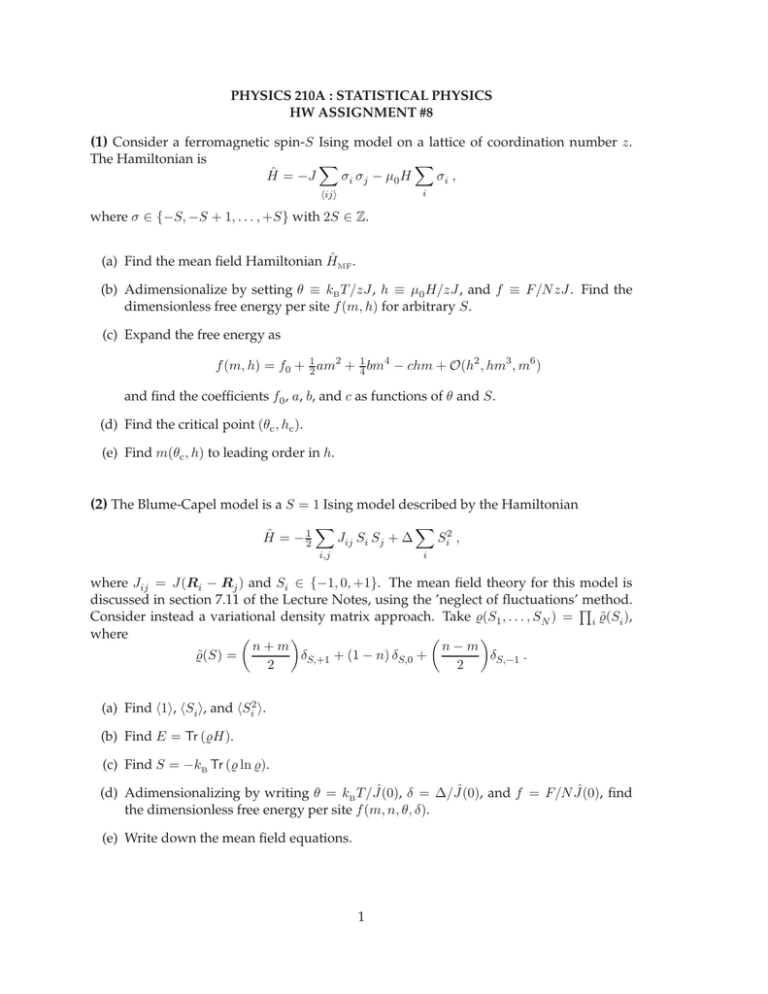
PHYSICS 210A : STATISTICAL PHYSICS
HW ASSIGNMENT #8
(1) Consider a ferromagnetic spin-S Ising model on a lattice of coordination number z.
The Hamiltonian is
X
X
Ĥ = −J
σi σj − µ 0 H
σi ,
i
hiji
where σ ∈ {−S, −S + 1, . . . , +S} with 2S ∈ Z.
(a) Find the mean field Hamiltonian ĤMF .
(b) Adimensionalize by setting θ ≡ kB T /zJ, h ≡ µ0 H/zJ, and f ≡ F/N zJ. Find the
dimensionless free energy per site f (m, h) for arbitrary S.
(c) Expand the free energy as
f (m, h) = f0 + 12 am2 + 41 bm4 − chm + O(h2 , hm3 , m6 )
and find the coefficients f0 , a, b, and c as functions of θ and S.
(d) Find the critical point (θc , hc ).
(e) Find m(θc , h) to leading order in h.
(2) The Blume-Capel model is a S = 1 Ising model described by the Hamiltonian
Ĥ = − 12
X
Jij Si Sj + ∆
i,j
X
Si2 ,
i
where Jij = J(Ri − Rj ) and Si ∈ {−1, 0, +1}. The mean field theory for this model is
discussed in section 7.11 of the Lecture Notes, using the ’neglect of fluctuations’ Q
method.
Consider instead a variational density matrix approach. Take ̺(S1 , . . . , SN ) = i ̺˜(Si ),
where
n−m
n+m
δS,+1 + (1 − n) δS,0 +
δS,−1 .
̺˜(S) =
2
2
(a) Find h1i, hSi i, and hSi2 i.
(b) Find E = Tr (̺H).
(c) Find S = −kB Tr (̺ ln ̺).
ˆ
(d) Adimensionalizing by writing θ = kB T /Jˆ(0), δ = ∆/Jˆ(0), and f = F/N J(0),
find
the dimensionless free energy per site f (m, n, θ, δ).
(e) Write down the mean field equations.
1
(f) Show that m = 0 always permits a solution to the mean field equations, and find
n(θ, δ) when m = 0.
(g) To find θc , set m = 0 but use both mean field equations. You should recover eqn.
7.322 of the Lecture Notes.
(h) Show that the equation for θc has two solutions for δ < δ∗ and no solutions for δ > δ∗ ,
and find the value of δ∗ .1
(i) Assume m2 ≪ 1 and solve for n(m, θ, δ) using one of the mean field equations. Plug
this into your result for part (d) and obtain an expansion of f in terms of powers of
m2 alone. Find the first order line. You may find it convenient to use Mathematica
here.
1
This problem has been corrected: (θ∗ , δ∗ ) is not the tricritical point.
2

